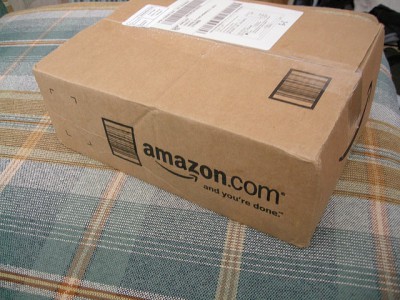Amazon.com gets physical (with a brick and mortar store, that is)
Amazon.com is the king of online retail. In 2013, Amazon reported just shy of $75 billion in sales. That’s the equivalent of every man, woman, child, and newborn on the planet shelling out a little more than ten bucks to Amazon in a single year.
With statistics like these, it’s no wonder that Amazon.com’s recent announcement raised a few eyebrows: The online giant is building a store. A real, old school, brick and mortar store.

Amazon is opening a brick and mortar store in Manhattan. From Aurelijus Valeiša.
And the store won’t be just anywhere. It’ll be right smack in the middle of New York City, on one of the most prominent street corners in Manhattan — across from the Empire State Building. (Could we be catering to tourists, perhaps?)
That’s some awfully expensive real estate, and we can bet that the size of the store won’t come close to rivaling one of Amazon.com’s 80 famously massive warehouses.
The entire concept of a “real” store flies in the face of Amazon.com’s entire business model. For starters, they’ve spent years effectively fighting against the brick and mortar retail stronghold, and their success has spelled doom for a lot of traditional retailers.
Plus, Amazon.com’s dominance has come, in a large part, from its ability to store and quickly ship just about anything you can imagine, from dog food to pianos to storage buildings to flat screen TVs. There is simply no way they can replicate this effect in a Manhattan-scale store.
Here’s why it just might work anyway: They’re not trying to replicate the online experience. Far from it.
Instead, they’ve intended the Manhattan location to serve two purposes:
1) It will offer the option for people to pick up products they’ve purchased online (mimicking the “ship to store” approach adopted by many traditional retailers such as Home Depot).
2) Eventually, it will serve as a place where people can view and try out Amazon.com’s branded products, including the ever-expanding Kindle line.
That second purpose is a very calculated move. It is a clear attempt to replicate Apple’s success with brick and mortar stores that allow people to touch and test Apple products.
Kevin Roose of New York Magazine writes that Apple holds the top spot on a list of U.S.-based retailers ranked by average sales per square foot (an extremely important marker of profitability).
Roose suspects that Amazon.com is also hoping to create the “line around the block” effect that Apple stores enjoy whenever there’s a big product launch. With a location next to one of the most visited tourist attractions in the world, it’s safe to say that they’re aiming for visibility.
The presence of one retail outlet won’t cannibalize on Amazon.com’s online sales, since it sounds like you won’t be able to walk in and pick anything off a shelf anyway (except, perhaps, for Kindles). Indeed, all Amazon.com is really risking by creating a physical store is: a) a massively high-priced lease, b) the possibility of embarrassment if the whole thing flops. If the latter happens, at least they’ll be able to console themselves with their $75 billion per year.
